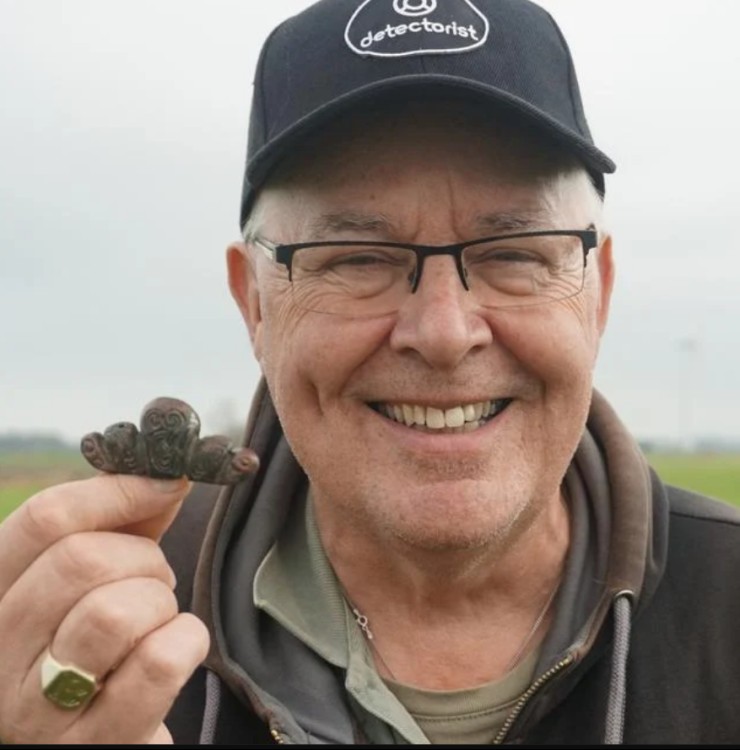Metal detector seeker finds unique Viking sword head from the 10th century
Categories: Nálezy nejenom s detektorem v západní Evropě
An amateur enthusiast with a metal detector has discovered a rare fragment of a Viking sword near the village of Witmarsum in the north of the Netherlands. It's a thousand-year-old decorated hilt. It depicts a curly boar's head - a Viking symbol of strength and warriorism. For archaeologists, the zela is exceptional - it is the first find of this type in the Netherlands.
The object was discovered by Sander Visser from Lelystad in May this year when he was exploring farmland near Witmarsum in Friesland with a metal detector. He found a clear signal at a depth of about 15 centimetres, just below the roots of the sod. Visser immediately realised that it was part of a sword, and a strangely decorated one at that. Now the Frisian Museum has presented it to the public.
The pommel of the Viking sword was made of a copper alloy and faintly gilded. According to experts, the design falls into the so-called "Mammen" style, typical of the Vikings at the end of the first millennium. Animal heads in the shape of wild boars can be discerned at both ends of the pommel, and the upward pointing boar's mouth is still clearly visible.
In northern and north-western Europe, early medieval swords were more than just weapons; people attributed human and miraculous qualities to them and they often had important symbolic value. "You could call these swords 'epic'," said Diana Spiekhout, curator of medieval and mound culture at the Frisian Museum.
Swords were passed down from father to son for generations. Sometimes they were modified over the years with new parts or decorations. "In the culture of the Vikingers, wild boars symbolise strength and courage and are associated with battles and protection," explains a press release from the Frisian Museum.
Vikings made many raids into the area, at one time even dominating medieval "Frisia". The sword head, however, does not date from this time, but is typical of the tenth century, when Scandinavian influence was waning. Shortly afterwards, the site was taken over by Christian rulers.
"This strange find shows that we have learned a lot about the time of the Vikings in Friesland, an area larger than present-day Friesland, through research in recent years," said Dr. Nelleke IJssennagger-van der Pluijm, director of the Frisian Academy and an expert on the world of Vikingers. "It strengthens our understanding of the contacts between Friesland and the Viking world in Scandinavia and the British Isles. It offers a new dimension to our historical perspective, as this beautiful head is the first in the Netherlands," she added.
Experts are now investigating other objects that could be linked to the Viking sword. They are also looking for answers to the origin and route of the sword pommel, whether it was broken off deliberately in the making or lost, among other things... The results are expected to be announced in 2025, when the findings will be exhibited at the Frisian Museum.
Roman Nemec
Sources: neerlandistiek.nl, flevopost.nl, denstor.nl
- Early Medieval - published early medieval militia finds using metal detectors in the history hunters section.




 Finders
Finders
The article is included in categories: